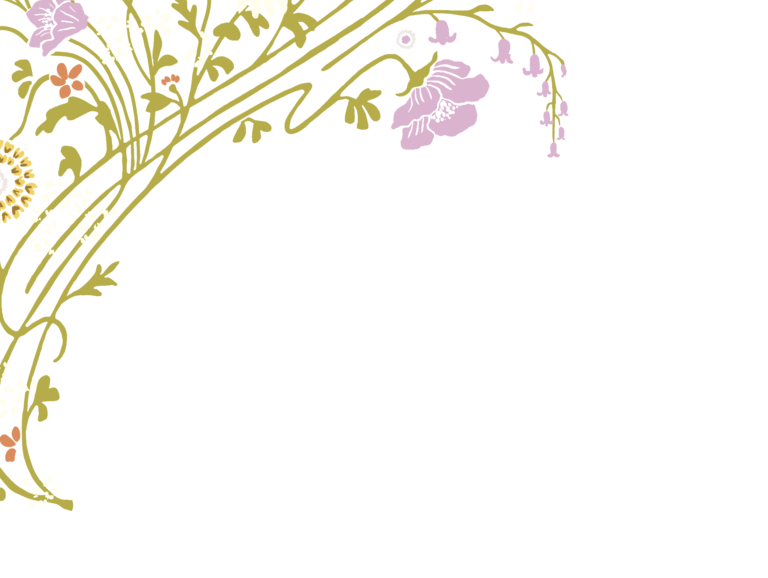
Steph & Hannah Ruth
Steph & Hannah Ruth
Jewish Weddings 101
Hannah Ruth and Steph are honored and thrilled to have a Jewish wedding ceremony. When seated, you'll see a chuppah, or a wedding canopy. The chuppah, handmade by Steph, is held aloft by four poles, which are in turn held by four members of their bridal party. The whole of the wedding ceremony will take place under the chuppah, representing the new home and new life the brides will enter after the ceremony.
The chuppah is considered an object of Jewish ceremonial art, and is part of the Jewish concept of hiddur mitzvah. Beauty enhances and deepens the sacredness of the ritual object and therefore of the ritual itself.
All in all, the ceremony should be around 40 minutes long with no intermission.
Before the Wedding
Ketubah Signing
What is a ketubah?
A ketubah is a wedding contract that traditionally protects the bride should the couple divorce. In modern, egalitarian communities, like the one Hannah Ruth and Steph are a part of, the couple write a contract reflecting their goals for marriage.
Who is present? What happens?
This is an intimate ceremony for the brides' immediate family and friends. Two Jewish/ non-family witnesses are present. In this case, Kate Zepka and Summer Boucher-Robinson are the brides' witnesses.
Steph and Hannah Ruth each raise a significant object of their choosing in the air for the witnesses to see.
Both Hannah Ruth and Steph sign the ketubah. This is called the "kinyan" or acquiring of the responsibilities of being married.
The two witnesses sign in acknowledgment of the raised objects.
Finally, Rabbi Aaron Potek signs the ketubah.
Afterward, the parents and grandparents of the brides share blessings, poems, hopes, and wishes for the couple.
Bedekin
What is the bedekin ceremony?
This is an intimate moment in which the brides veil one another. Traditionally, a bride is veiled by the groom to symbolize Jacob accidentally marrying Leah instead of Rachel in the Torah.
Hannah Ruth and Steph are reimagining this ritual as a way to separate themselves from one another, symbolically representing their individuality in their marriage.
During the Wedding
Circling
After the processional and welcome from Rabbi Aaron Potek, the brides begin their wedding ceremony by circling one another seven times. The number seven is sacred in Judaism, representing the number of days of creation, the number of steps into the mikvah (ritual bath), the seven branches on the menorah (not to be confused with the hanukkiah which has nine), and the Sheva Brachot, or seven blessings recited during weddings (see below).
Blessings over Wine and Consecration of the Betrothal
Hannah Ruth and Steph will raise a glass of wine and recite the blessing over it. Rabbi Aaron will recite the blessing over the betrothal in Hebrew and Steph and Hannah Ruth will recite it in English.
Exchanging of the Rings
Jewish couples exchange plain, unadorned rings representing the simple acts of love needed to make a marriage last. Steph and Hannah Ruth will recite a blessing one after another while putting the rings on their respective fingers.
During this moment, the brides also show the rings to the Ketubah witnesses, Summer and Kate.
Reading of the Ketubah
Hannah Ruth and Steph spend many hours co-creating the text of their Ketubah and will read it aloud in English.
Sheva Brachot
The Seven Blessings are the heart of a Jewish wedding ceremony. Hannah Ruth and Steph have written their own blessings that incorporate traditional and modern themes that reflect who they are as a couple. The blessings will be read in Hebrew by Rabbi Aaron and in English by members of the wedding party.
Smashing the Glass
Perhaps the most iconic symbol of a Jewish wedding, the smashing of a glass is the moment the couple is "actually" married. And, like most of Judaism, there are dozens of interpretations and origin stories for this ritual.
For Hannah Ruth and Steph, it is 1) An ancient tradition they are honored to carry on, 2) A representation of the hardships that women (especially queer women) have had to struggle with in Judaism and society at large, and 3) A commitment to doing what they can to fix the world's brokenness together.
Both Hannah Ruth and Steph will be smashing glasses.
Mazal Tov!!
As Hannah Ruth and Steph smash the glasses, guests are encouraged to yell "Mazal Tov," which means congratulations.
After this, the brides and wedding party will process out.
After the Ceremony
Yichud
After the brides recess, they'll be whisked into a private room to share a moment of quiet together. During their 10 minutes alone, they will share vows and blessings, change shoes, and have a bite to eat.
Need the brides during this time? You'll have to go through Rabbi Aaron, who will be our "shomer," watching the door to make sure no one enters.
The Hora
The hora is a traditional dance in which guests are supposed to participate with vigor! Guests hold hands in big circles and move their feet in a grapevine pattern around and around. The hora starts off to Hava Negila, a traditional klezmer song. This video is a great example of what to expect!
Hava nagila, hava nagila
Hava nagila ve-nis'mecha
Repeat
Hava neranena, hava neranena
Hava neranena venis'mecha
Uru, uru achim
Uru achim belev same'achLet us rejoice, let us rejoice
Translation:
Let us rejoice and be glad
Repeat
Let us sing, let us sing
Let us sing and be glad
Awaken, awaken brethren
Awaken brethren with a cheerful heart.
We are so honored to have you join us for our wedding. We look forward to celebrating with everyone on October 27th!